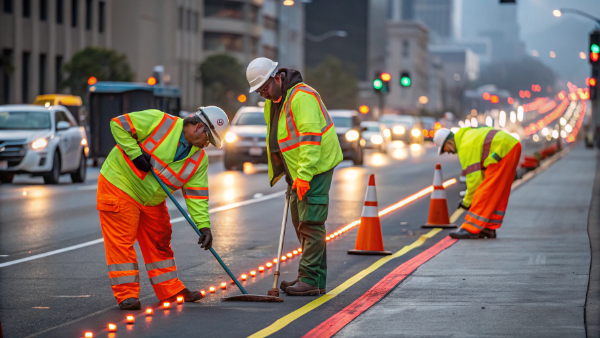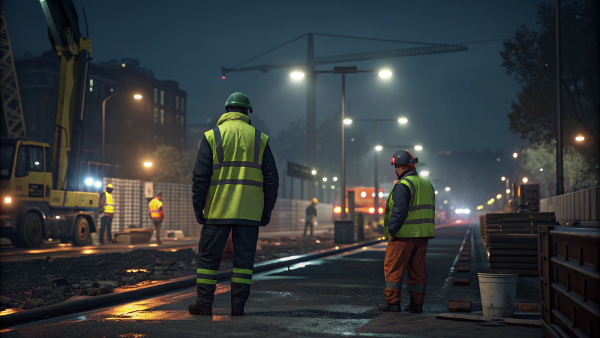Confused by safety vest types? The wrong choice risks fines and your workers' safety. I am here to explain the differences and help you select the right vest every time.
A Type O safety vest1 is for "Off-Road" use. It's a Class 1 garment2 for workers in areas with no vehicle traffic or where speeds are under 25 mph, like warehouses or parking lots. It offers the minimum level of high-visibility protection required by ANSI standards3.
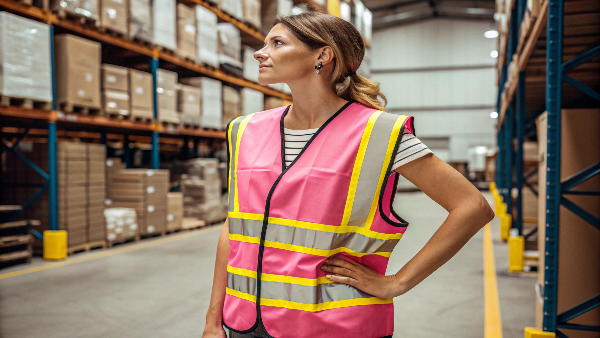
Understanding the basics of Type O is a great start. But the world of safety vests is much broader, with different types and colors serving specific purposes. Let's explore these other classifications to ensure your team is always properly equipped and fully compliant with safety regulations.
What are the different types of safety vests?
Are all high-visibility vests the same? Using the wrong type can compromise safety and compliance. Let's break down the main ANSI categories so you can make an informed decision.
Safety vests are categorized by performance class (1, 2, 3) and type (O, R, P) based on the work environment. Type O is for off-road, Type R for roadway, and Type P for public safety. Higher classes provide more visibility for riskier situations.
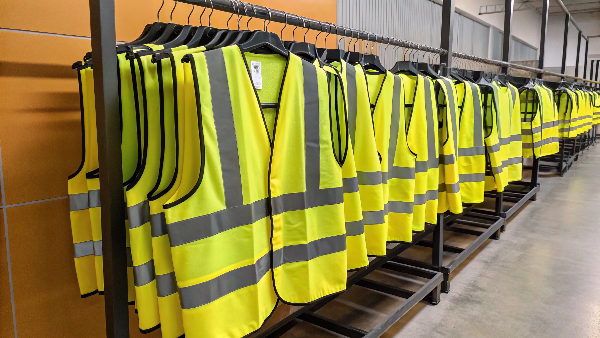
The ANSI/ISEA 107 standard is the rulebook we follow in the industry. It sets the minimum requirements for high-visibility clothing4. It organizes vests into three main "Types" based on the work environment.
- Type O: For Off-Road use. This is the simplest class, for workers who are not exposed to roadway traffic.
- Type R: For Roadway use. This is for workers who are exposed to traffic from public roadways.
- Type P: For Public Safety. This is a special category for emergency and incident responders working in traffic zones.
Each type can also have a Performance Class5 (1, 2, or 3). Class 1 offers the least visibility, while Class 3 offers the most. For example, a Type O vest is always Class 1. A Type R vest can be Class 2 or 3. At my company, Vissafety, we manufacture vests that meet all these standards, ensuring our clients receive compliant gear for any job.
| Vest Type | Designated Use | Performance Classes | Typical Work Environment |
|---|---|---|---|
| Type O | Off-Road | Class 1 | Warehouses, Parking Lots, Factories |
| Type R | Roadway | Class 2, Class 3 | Road Construction, Utility Work |
| Type P | Public Safety | Class 2, Class 3 | Police, Firefighters, EMS |
What is a type P safety vest?
Is your team working in emergency situations? Regular vests might not be enough. A specialized vest is needed for public safety professionals to ensure they stand out and can do their job.
A Type P safety vest6 is designed for "Public Safety" workers like police, firefighters, and EMS personnel. It provides high visibility during emergencies and allows for easy access to equipment. ANSI/ISEA 107 recognizes the unique requirements for these first responders.
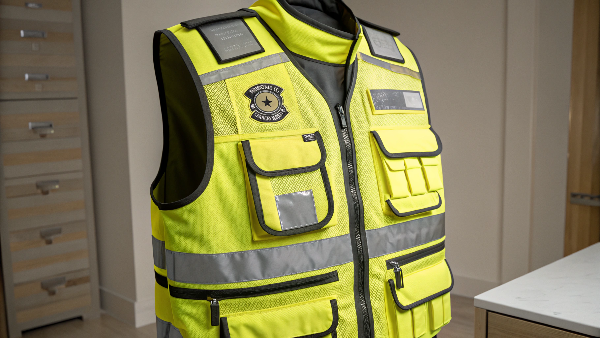
Public safety professionals have unique needs. They work in high-risk roadway environments but also need quick access to equipment on their belts, like radios, holsters, and medical kits. A standard Type R vest could get in the way. That is why Type P was created.
Type P vests provide the high visibility of a Class 2 or Class 3 garment but often have features like:
- Shorter Torso: To prevent the vest from covering a duty belt.
- Breakaway Designs: 5-point breakaway features (shoulders, sides, front) are common so the vest can be quickly removed if it gets snagged on a vehicle or grabbed by a suspect.
- Specific Cutouts: Designed for easy access to essential gear.
At Vissafetywear, we work with clients to design custom Type P vests. We can add mic tabs, clear badge holders, and other features to meet the exact specifications of a police department or fire crew. This level of customization ensures both safety compliance and functional performance in critical situations.
What is a type R vest?
Are your employees working near traffic? Their visibility is non-negotiable. A standard off-road vest simply will not provide the protection they need against fast-moving vehicles.
A Type R safety vest is designed for "Roadway" use. It's for workers exposed to traffic, like road construction crews or crossing guards. These vests, available in Class 2 or 3, have more reflective material7 to ensure visibility against complex backgrounds.
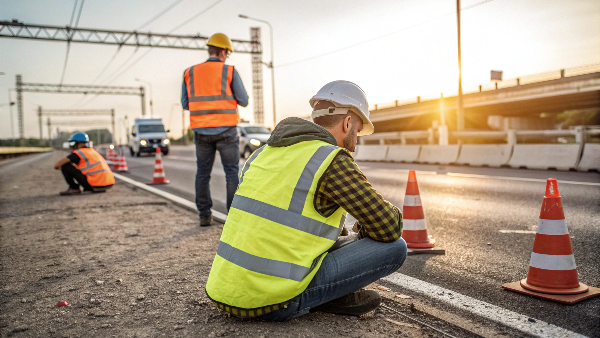
A Type R vest is the most common type of safety vest you will see. It is the standard for anyone working on or near roads. The key difference between Type R classes is the amount of fluorescent background material and reflective tape.
Class 2 vs. Class 38
- Class 2: This is the minimum standard for workers on roadways where traffic speeds are 25 mph or higher. It provides good visibility in most weather conditions during the day and night.
- Class 3: This offers the highest level of visibility. It is required when workers face traffic speeds over 50 mph, work in complex environments, or have tasks that draw their attention away from traffic. Class 3 garments have sleeves and additional reflective material for maximum visibility.
Choosing between Class 2 and Class 3 depends entirely on the risk level. We always advise our clients to assess their worksite conditions carefully. Our production lines can create millions of both Class 2 and Class 3 vests annually, all certified to meet EN ISO 20471 and ANSI/ISEA 107.
| Class | Traffic Speed | Worker's Focus | Environment |
|---|---|---|---|
| Class 2 | 25-50 mph | Near traffic | Separated from traffic |
| Class 3 | >50 mph | Distracted from traffic | Low visibility, complex background |
What does a black safety vest9 mean?
Seeing black safety vests on a worksite? It might seem counterintuitive for visibility. There is a specific reason for them, and using them correctly is key to staying safe.
A black safety vest is not ANSI-compliant for high visibility on its own. It is often used for identification or to hide dirt on the lower portion of a compliant vest (e.g., a yellow vest with a black bottom) while still meeting reflective tape requirements.
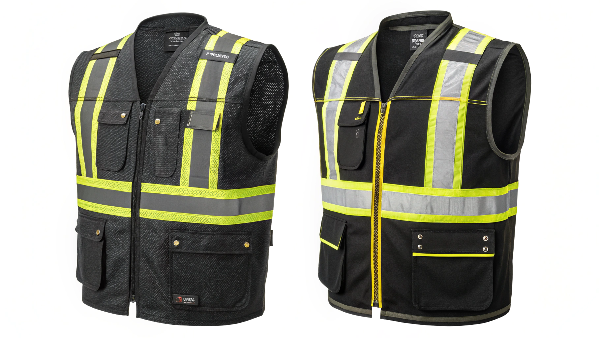
ANSI/ISEA 107 is very clear: the background material of a compliant vest must be fluorescent yellow-green10, orange-red, or red. Black is not a fluorescent color and does not provide visibility in low light11. So, a solid black vest is not a "safety" vest in the official sense.
However, you will often see black used in two popular ways:
- Identification: In very low-risk environments away from traffic, companies might use black vests to identify supervisors, visitors, or specific teams. These are not for high-visibility protection.
- Two-Tone Designs: A very popular and practical style is a high-visibility vest with a black bottom. The upper part is fluorescent yellow or orange to ensure visibility, while the black lower part is placed in a high-contact area that gets dirty easily (like the stomach and pocket areas). This design keeps workers visible while maintaining a cleaner, more professional look over time.
We produce a lot of these two-tone vests. They offer the perfect blend of compliance, function, and style, which many of our clients appreciate.
Is an orange or yellow safety vest better?
Choosing between orange and yellow seems simple. But the wrong color in the wrong environment can make workers less visible. Let's look at which color offers better contrast.
Neither color is inherently "better"; it depends on the work environment. Fluorescent yellow-green offers the highest visibility during the day and in low light. Fluorescent orange-red provides excellent contrast against backgrounds like snow, foliage, and sky.
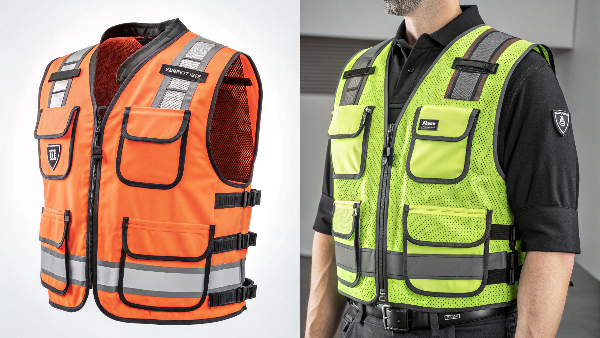
Both fluorescent yellow-green and fluorescent orange-red12 are fully compliant with ANSI/ISEA 107. The best choice depends on where your team is working. The goal is always to create the greatest contrast with the surrounding environment.
Color Contrast Guide
| Color | Best For | Why It Works | Common Uses |
|---|---|---|---|
| Fluorescent Yellow-Green | Urban environments, low light | The human eye is most sensitive to this shade, making it the brightest and most visible color, especially at dawn and dusk. | City road work, factory floors, warehouses. |
| Fluorescent Orange-Red | Rural and natural settings | This color stands out sharply against green trees, blue sky, white snow, and brown dirt. It does not blend in with nature. | Highway construction, forestry, hunting. |
I once worked with a client who managed a large-scale logging operation. They were using yellow-green vests, but in the autumn, the vests blended in with the changing leaves. We switched them to fluorescent orange-red12 vests, and the increase in visibility for their crew was immediate and significant. It is all about choosing the right tool for the job.
What does a pink safety vest13 mean?
Seeing pink vests on a job site? This color is not just for show. It often carries a specific meaning and is used to identify certain roles quickly and easily.
Pink safety vests are not ANSI-compliant for high-visibility protection. They are typically used for identification purposes, often to distinguish visitors, new trainees, or to support specific company initiatives like breast cancer awareness campaigns. They do not offer certified protection.
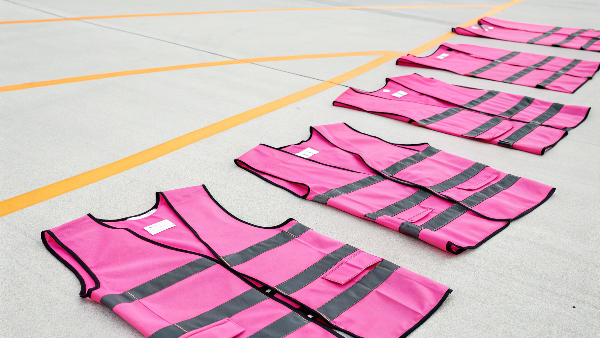
Just like black vests, pink vests do not meet the strict fluorescent color requirements of the ANSI/ISEA 107 standard. You should never use a pink vest for a worker who is exposed to moving traffic or equipment.
So why use them? Many large companies use a color-coding system to manage their worksites efficiently. A non-compliant color like pink is a very effective way to make certain people stand out. For example, if everyone in a high-risk area is wearing compliant orange vests, giving a pink vest to a visitor immediately signals to everyone that this person is not familiar with the site and may need assistance or supervision. It is a simple visual cue that enhances site management.
At Vissafetywear, we can produce vests in any custom color, including pink. We always make it clear to our clients that these are for identification only and should not be used as a substitute for proper ANSI-compliant high-visibility personal protective equipment (PPE).
Does the color of a safety vest matter?
Think any bright color will do? That mistake could compromise worker safety and lead to non-compliance. The color is one of the most critical elements of a safety vest.
Yes, color matters immensely. For a safety vest to be ANSI/ISEA 107 compliant, its background material must be a specific fluorescent color: yellow-green, orange-red, or red. These colors are scientifically proven to be the most visible to the human eye, especially in daylight.
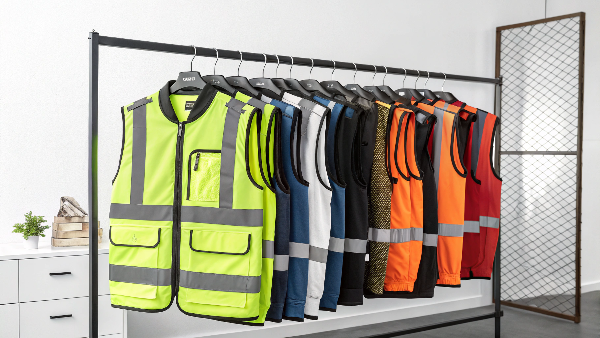
The science here is quite simple. Fluorescent materials absorb non-visible ultraviolet (UV) light from the sun and re-emit it as visible light. This makes the vest appear to glow, making it much more visible than standard colors, particularly at dawn and dusk when light is low.
The specific shades—yellow-green, orange-red, and red—were chosen because they are at the peak of the human eye's perception curve. Our eyes are naturally drawn to them. Using other bright but non-fluorescent colors like a standard blue or green will not provide the same level of conspicuity, which is the official term for how well an object stands out from its background.
In our R&D lab, we have over 75 testing devices to ensure the fabrics we use meet these exact color and fluorescence specifications. It is not just about being a bright color; it is about being the right color that is proven to save lives.
What does a purple safety vest14 mean?
Have you seen purple vests on a worksite? Like other non-standard colors, it is not a random choice. It is almost always part of a visual system for identifying personnel.
A purple safety vest, similar to pink or black, is not an ANSI-compliant color for high visibility. It is used for role identification. For example, some sites may use purple to designate specific team leads, engineers, or special event staff in low-risk environments.
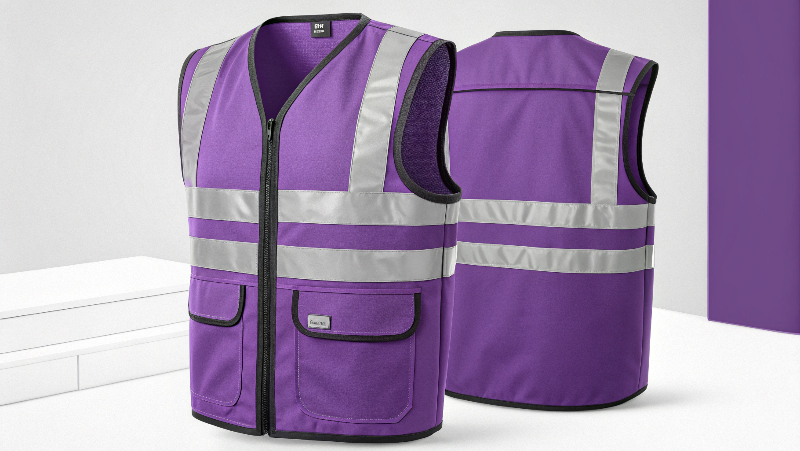
Using a color-coded system with non-compliant vests is a great way to improve organization on a large or busy site. It allows anyone to identify a person's role from a distance without having to ask. It is about communication, not roadway protection.
Here is an example of how a company might use a color-coded system:
Sample Vest Color-Coding System (For Identification)
| Vest Color | Role | Environment |
|---|---|---|
| Yellow/Orange (ANSI) | General Labor / Road Crew | High-Risk, Roadway |
| Red | Fire Warden / Safety Officer | Site-Wide |
| Blue | Electrician / Technician | Indoor / Low-Risk |
| Purple | Lead Engineer / Surveyor | Indoor / Low-Risk |
| Pink | Visitor / Trainee | Visitor Areas Only |
This system removes confusion and helps streamline operations. We frequently get bulk orders for vests in various colors to support these internal systems. As a manufacturer, our job is to provide clients with what they need, whether it is a fully compliant Type R, Class 3 vest or a simple purple vest for identification.
Conclusion
In summary, choosing the right safety vest comes down to understanding the work environment. From Type O for off-road to compliant
-
Learn about the specific uses and standards of Type O safety vests for off-road environments. ↩
-
Discover the minimum visibility requirements for Class 1 garments and their applications. ↩
-
Understand the ANSI standards that govern safety vest compliance and visibility. ↩
-
Get insights into the importance and regulations surrounding high-visibility clothing. ↩
-
Learn about the different Performance Classes and their significance in safety vests. ↩
-
Find out how Type P vests cater to public safety professionals and their unique needs. ↩
-
Understand the role of reflective material in enhancing visibility for safety vests. ↩
-
Understand the distinctions between Class 2 and Class 3 vests for roadway safety. ↩
-
Discover the uses and limitations of black safety vests in work environments. ↩
-
Learn why fluorescent yellow-green is the most visible color for safety vests. ↩
-
Learn how low light conditions impact the choice of safety vest colors and types. ↩
-
Explore how fluorescent orange-red enhances visibility in natural settings. ↩ ↩
-
Find out the purpose of pink safety vests and their role in identification. ↩
-
Learn about the identification uses of purple safety vests on job sites. ↩

